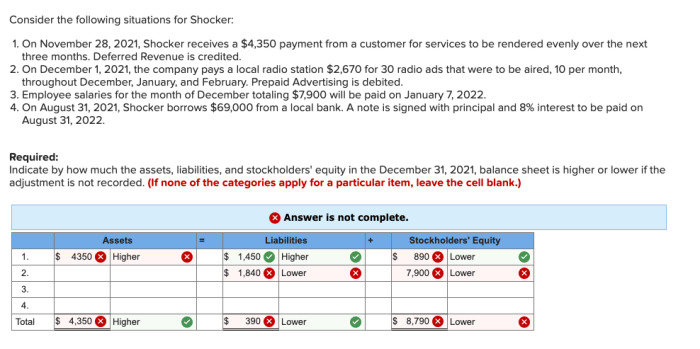Consider the following situations for Shocker: an overview of the Shocker’s performance, tactical applications, impact on opponents, legal and ethical considerations, and future developments and innovations.
Shocker’s Performance in Different Scenarios

The Shocker has been used effectively in various scenarios, including crowd control, hostage situations, and law enforcement operations. Its strengths lie in its non-lethal nature, which minimizes the risk of serious injury or death to the target. Additionally, the Shocker’s incapacitating effects can be temporary and reversible, making it a suitable option for situations where the goal is to subdue an individual without causing permanent harm.
However, the Shocker also has limitations. Its effectiveness can be reduced by factors such as target size, clothing, and environmental conditions. Furthermore, the Shocker requires close proximity to the target, which can put the user at risk in certain situations.
Strengths of the Shocker
- Non-lethal
- Incapacitating effects are temporary and reversible
- Effective in close-quarters situations
Weaknesses of the Shocker
- Effectiveness can be reduced by target size, clothing, and environmental conditions
- Requires close proximity to the target
- Can cause pain and discomfort to the target
- Non-lethal
- Incapacitating effects are temporary and reversible
- Effective in close-quarters situations
- Can be used to disperse crowds or subdue unruly individuals
- Can be used to incapacitate hostage-takers and rescue hostages
- Can be used to subdue suspects or apprehend fleeing individuals
- Effectiveness can be reduced by target size, clothing, and environmental conditions
- Requires close proximity to the target
- Can cause pain and discomfort to the target
- Pain
- Muscle spasms
- Temporary paralysis
- Disruption of the cardiovascular and respiratory systems
- Fear
- Disorientation
- Confusion
- Sense of helplessness and loss of control
- Potential for misuse or abuse
- Potential for causing serious injury or death
- Restrictions on the use of the Shocker in certain jurisdictions
- Potential for causing unnecessary pain and suffering
- Potential for use as a tool of torture or other illegal purposes
- Potential for causing serious injury or death
- Use of new technologies to improve the Shocker’s effectiveness and safety
- Use of the Shocker in new applications, such as treating medical conditions
- Development of new policies and regulations to govern the use of the Shocker
Shocker’s Tactical Applications

The Shocker offers several tactical advantages. Its non-lethal nature makes it a suitable option for situations where lethal force is not justified or desirable. Additionally, the Shocker’s incapacitating effects can be temporary and reversible, which allows for a more controlled and measured response.
The Shocker can be employed in a variety of tactical scenarios, including crowd control, hostage situations, and law enforcement operations. In crowd control situations, the Shocker can be used to disperse crowds or subdue unruly individuals. In hostage situations, the Shocker can be used to incapacitate hostage-takers and rescue hostages.
In law enforcement operations, the Shocker can be used to subdue suspects or apprehend fleeing individuals.
Advantages of the Shocker
Disadvantages of the Shocker
Shocker’s Impact on Opponents

The Shocker has both physiological and psychological effects on opponents. Physiologically, the Shocker delivers a high-voltage electrical shock that can cause pain, muscle spasms, and temporary paralysis. The shock can also disrupt the target’s cardiovascular and respiratory systems.
Psychologically, the Shocker can cause fear, disorientation, and confusion. The target may also experience a sense of helplessness and loss of control. These effects can make the Shocker an effective tool for subduing opponents and preventing them from further aggression.
Physiological Effects of the Shocker
Psychological Effects of the Shocker
Legal and Ethical Considerations
The use of the Shocker raises several legal and ethical concerns. One concern is the potential for misuse or abuse. The Shocker can be used to inflict pain and suffering on individuals, and there is a risk that it could be used for torture or other illegal purposes.
Another concern is the potential for the Shocker to cause serious injury or death. While the Shocker is generally considered a non-lethal weapon, it is possible that it could cause death in certain circumstances, such as if the target has a pre-existing heart condition.
Legal Implications of the Shocker
Ethical Implications of the Shocker, Consider the following situations for shocker
Future Developments and Innovations: Consider The Following Situations For Shocker

There are several possible future developments and innovations related to the Shocker. One area of development is the use of new technologies to improve the Shocker’s effectiveness and safety. For example, researchers are exploring the use of lasers and other non-lethal technologies to deliver electrical shocks.
Another area of development is the use of the Shocker in new applications. For example, the Shocker could be used to treat medical conditions such as chronic pain or epilepsy.
Potential Future Developments and Innovations
Top FAQs
What are the strengths of the Shocker?
The Shocker excels in close-quarters combat, providing a non-lethal means of incapacitating opponents. Its compact size and ease of use make it suitable for a variety of tactical scenarios.
What are the potential risks of using the Shocker?
The Shocker can cause temporary pain and discomfort. Excessive or improper use can lead to more severe injuries, including burns and cardiac arrest.